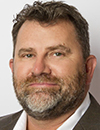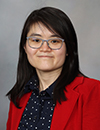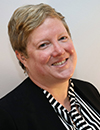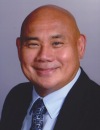Co-Located Conference AgendasExtracellular Vesicles (EVs) & Nanoparticles 2024: Diagnostics, Delivery, Therapeutics | The Space Summit 2024 | 

Wednesday, 3 April 2024 |
Agenda for April 3, 2024 -- Please see Agenda for EV Track |
| |
Thursday, 4 April 202409:00 |  | Keynote Presentation Biomanufacturing and In-Space Production Applications on the ISS National Lab
Michael Roberts, Chief Scientific Officer, International Space Station National Laboratory, United States of America
NASA and the ISS National Laboratory are enabling the commercial development of low-Earth orbit by sponsoring both fundamental research and the in space manufacturing of advanced materials and biological products that improve life on Earth. As the International Space Station continues to offer access to the unique benefits of a microgravity laboratory, producing breakthrough research as well as new and improved products and technologies, it is also pioneering the path forward for the transition to commercially LEO platforms. |
| 09:30 |  | Keynote Presentation In-Space Produced Janus Base Nanomaterials for Treatment of Osteoarthritis and Solid Tumors
Yupeng Chen, Associate Professor, University of Connecticut, United States of America
There is a significant need for novel nanomaterials and their fabrication methods for emerging biomedical applications, such as drug and RNA delivery. Although lipid nanoparticles (LNPs) have been approved for RNA delivery, they exhibit unsatisfactory stability at ambient temperature and high liver accumulation, which limits their applications. To address these issues, we have successfully developed a new family of DNA-inspired Janus base nanomaterials (JBNs). These can form rod-shaped nanoparticles, which are slimmer than spherical LNPs, and successfully deliver therapeutic cargoes into “hard-to-penetrate” tissues, including articular cartilage and certain matrix-rich solid tumors. Our JBNs are formed through controlled self-assembly processes in water and remain stable at ambient temperature, both before and after cargo loading, making them highly suitable for in-space production. Preliminary results have demonstrated that JBNs can be successfully fabricated in space, where microgravity significantly enhances the self-assembly of JBNs, thereby improving drug loading and uniformity. This enhancement could enable maximum therapeutic efficacy with minimal toxicity. In summary, our in-space produced JBNs may offer a revolutionary strategy for RNA and drug delivery to “hard-to-penetrate” tissues, potentially treating diseases such as osteoarthritis and cancer. |
| 10:00 |  | Keynote Presentation Single Cell Sequencing Reveals Non-Random Genetic Alterations in a Cyanobacterium During the Biology and Mars Experiment (BIOMEX)
Yuguang Liu, Assistant Professor and Associate Consultant, Microbiome Program, Mayo Clinic, United States of America
Understanding the impact of long-term exposure of microorganisms to
space is critical in understanding how these exposures impact life
during extended human missions. Here, we subjected Nostoc sp. CCCryo
231-06, a cyanobacterium capable of surviving in extreme conditions, to a
23-month stay at the International Space Station (BIOMEX, on the
EXPOSE-R2 platform) and returned it to Earth for single-cell whole
genome analysis. We used a microfluidic platform to isolate single
cells, and amplify femtograms of DNA in a precisely controlled manner
with minimal contamination, and sequenced their whole genome to identify
the genomic changes in single Nostoc cells. The variant profile showed
that biofilm and photosystem associated loci were the most altered, with
an increased variant rate of synonymous base pair substitutions. We
concluded that the combined effect of complex cosmic radiation and UV
exposure may result in synergistic damage effects, with a higher number
of synonymous variants with simultaneous exposure to cosmic and UV
radiations. The cause(s) and evolutionary implications of the non-random
synonymous genomic substitutions observed at the single cell level
under long-term cosmic exposure warrants further investigation, and may
revolutionize our views on how evolution occurs at the single cell, and
also population level. |
| 10:30 | Mid-Morning Coffee Break and Networking in the Exhibit Hall | 11:00 |  | Keynote Presentation Biomanufacturing in Microgravity – Where we are Today and Where we Plan to Go in the Future
Molly Mulligan, Director, Business Development, Redwire, United States of America
Biomanufacturing at scale in space is not today but it will be in the future. Using 3D bioprinters and automated crystallization systems with real time data, biomanufacturing is poised to have a breakthrough in microgravity. This talk will focus on the technology and possibilities of today on ISS and what the future holds on CLDs for true scale biomanufacturing in small and large molecule crystallization and 3D bioprinting. |
| 11:30 | | 12:00 |  | Keynote Presentation Low Earth Orbit Research Opportunities on the International Space Station
Kristin Kopperud, Science Program Director, Biological Sciences, International Space Station National Laboratory, United States of America
Overview of the ISS National Laboratory, including its mission, role, and unique set of experimental conditions. I will also discuss some research opportunities, from past to upcoming, that are available to researchers desiring to conduct experiments in microgravity. |
| 12:30 |  | Keynote Presentation NCATS Tissue Chips in Space Program
Danilo Tagle, Director, Office of Special Initiatives, National Center for Advancing Translational Sciences at the NIH (NCATS), United States of America
Several human body systems demonstrate physiological changes when subjected to microgravity environment during spaceflight – cardiac dysfunction, decrease in muscle mass, bone density loss, decreased visual acuity, and immunosenescence – and these physiological changes closely mirror some age-related disease states except that microgravity-induced changes can happen in weeks or months compared to years and decades on earth. Through a partnership between NCATS, NASA and the Center for Advancement of Science in Space (CASIS), the Tissue Chips in Space program was established in 2017 to study the effects of a microgravity environment by deploying tissue chips representing key aspects of the human body at the International Space Station National Laboratory (ISS NL). Through this program, we have learned how microgravity exerts a unique range of stresses and pathophysiological perturbations on the human body resulting in dramatic increase in oxidative stress and inflammation, muscle wasting, immune senescence, cardiovascular deconditioning and cardiomyopathy, and alteration of gene expression. Aside from the scientific benefits of studying human physiological changes in space, the program has also benefited from technological improvements in the miniaturization and automation of tissue chips instrumentation that is requisite for payload deployment and operations at the ISS NL.
The Tissue Chips in Space program will be renewed to focus on the development of multi-organ integrated tissue chip and organ-on-a-chip platforms more closely approximating human body-on-chip systems that model physiological changes associated with hallmarks of aging and related diseases in low earth orbit (LEO). The renewal will also support the use of iPSC-derived organ-specific cell types from diverse groups of people enabling applications in Precision Medicine. This program renewal will enable advances in the study of microgravity-associated conditions mimicking accelerated aging pathophysiology in a relatively shorter period of time than it would take to undertake the same studies on Earth. These advances are expected to lead to better our understanding of the mechanisms controlling age-related conditions and to new countermeasures that can slow or mitigate the process of aging. |
| 13:00 |  A User-Centric Odyssey into Cutting-Edge Technique A User-Centric Odyssey into Cutting-Edge Technique
Victor Morel Cahoreau, Head of Sales, Eden Microfluidics
Eden Tech is a French company providing microfluidics solutions at each process step. In this talk, we will overview how to make microfluidics easier and faster.
| 13:30 | Networking Buffet Lunch in the Exhibit Hall -- Networking with Colleagues, Engage with Exhibitors and View Posters | 14:00 | Round-Table Open Discussion: How does a Scientist Send Their Experiment into Space On-Board International Space Station -- Q&A with Mike Roberts and Kristin Kopperud, ISS-National Laboratory
|
|


 Add to Calendar ▼2024-04-03 00:00:002024-04-04 00:00:00Europe/LondonThe Space Summit 2024The Space Summit 2024 in Miami, FloridaMiami, FloridaSELECTBIOenquiries@selectbiosciences.com
Add to Calendar ▼2024-04-03 00:00:002024-04-04 00:00:00Europe/LondonThe Space Summit 2024The Space Summit 2024 in Miami, FloridaMiami, FloridaSELECTBIOenquiries@selectbiosciences.com